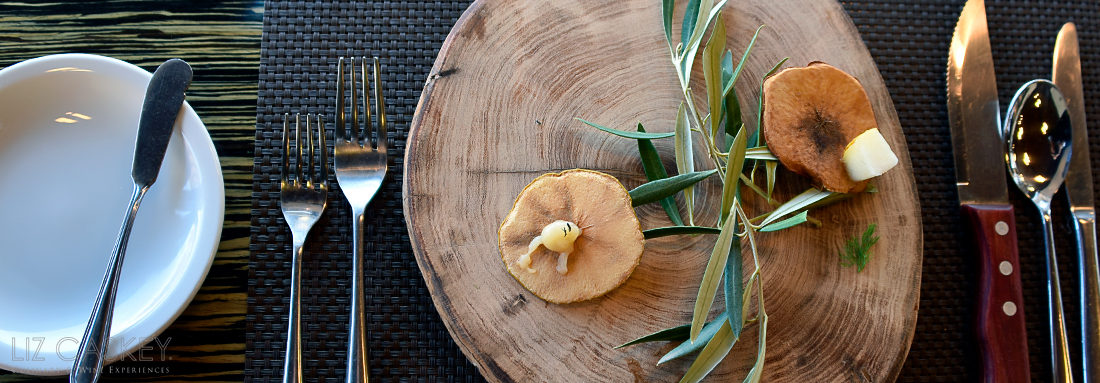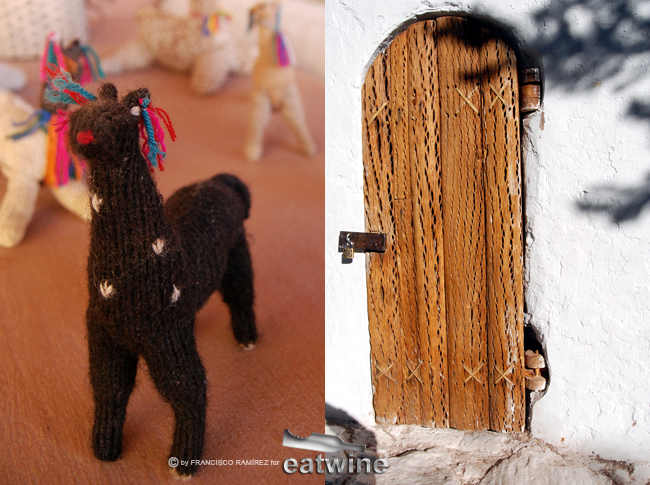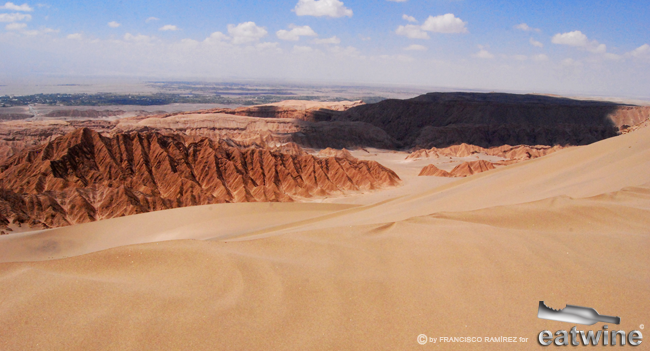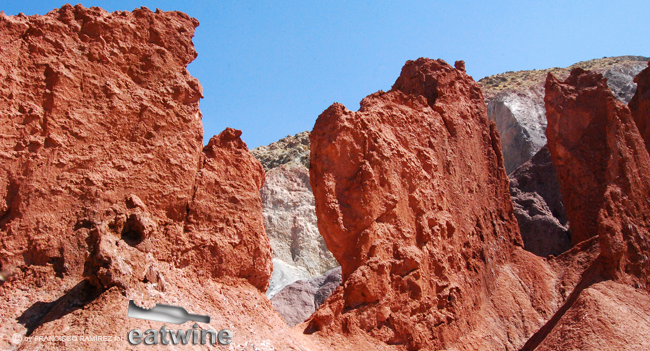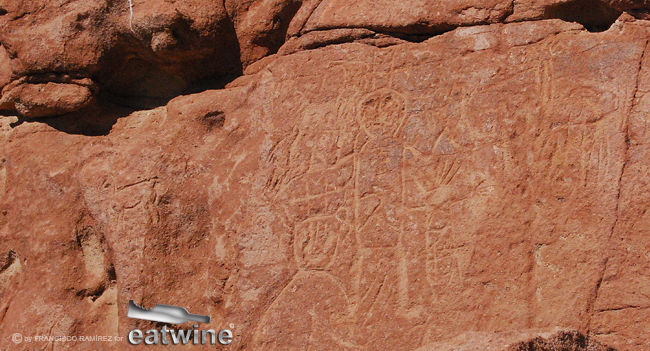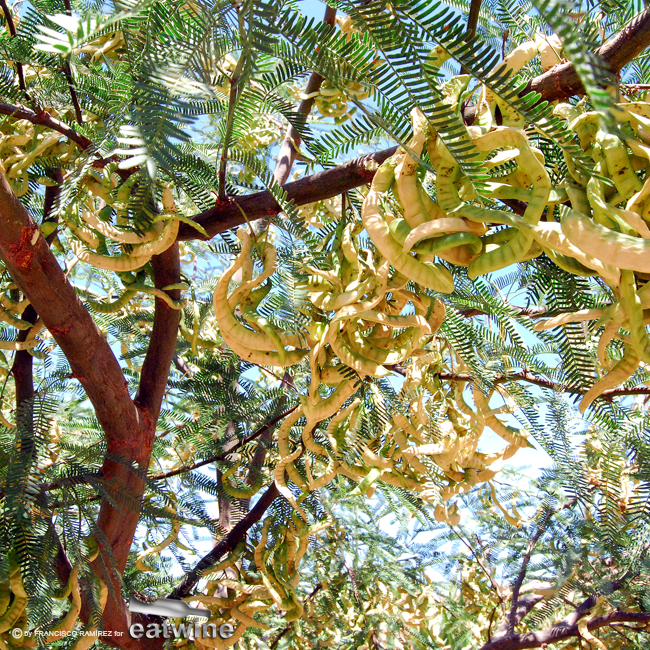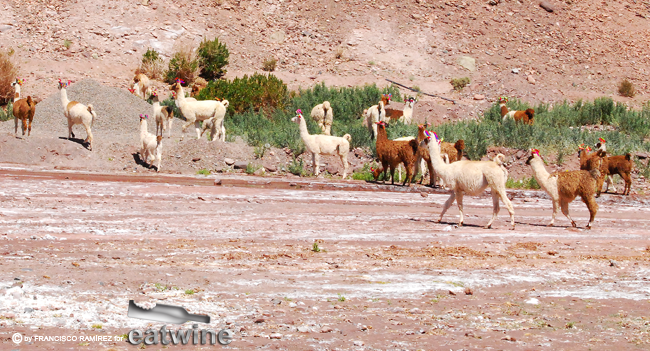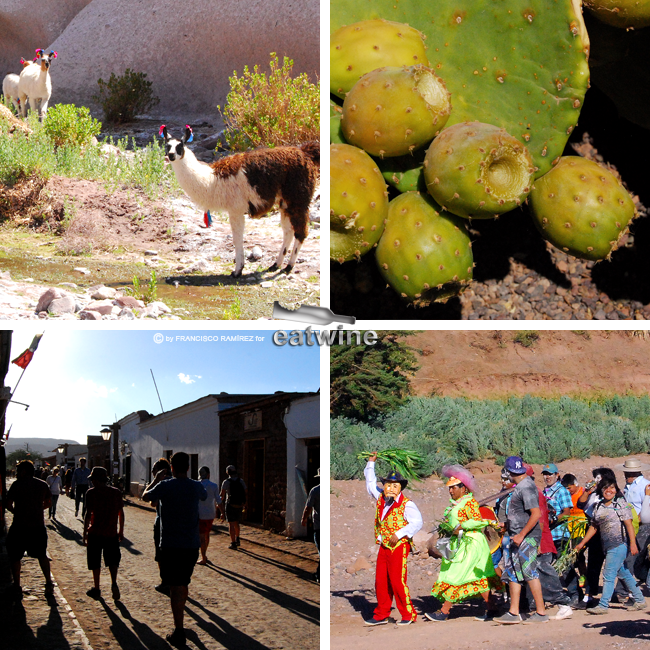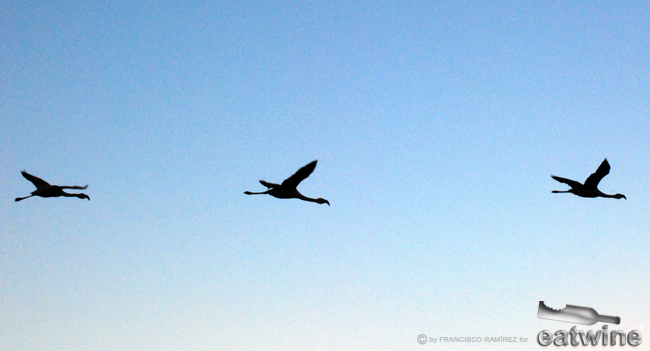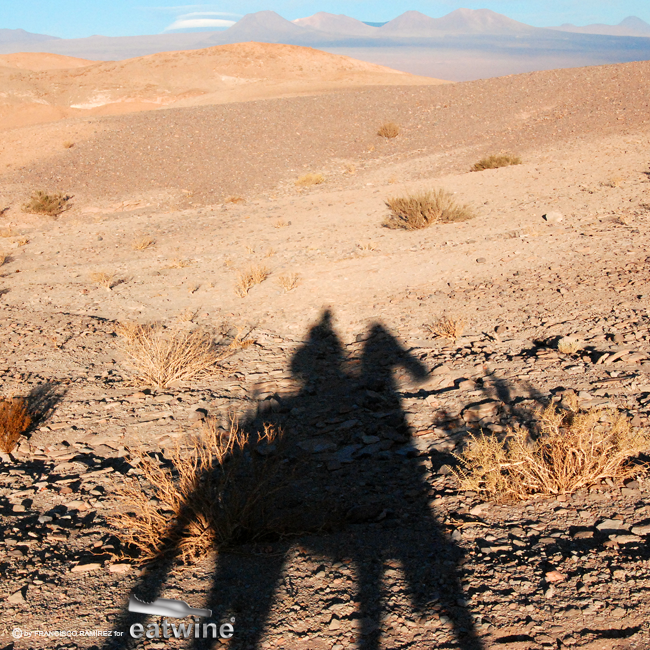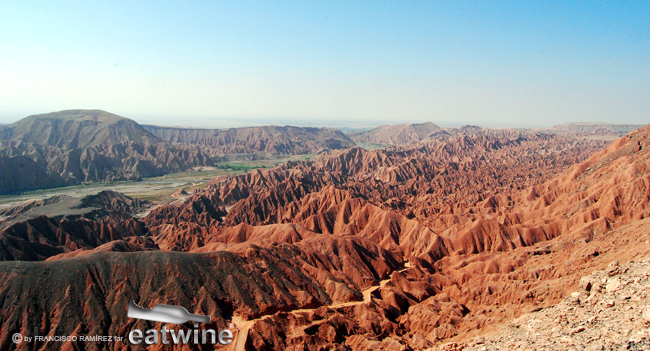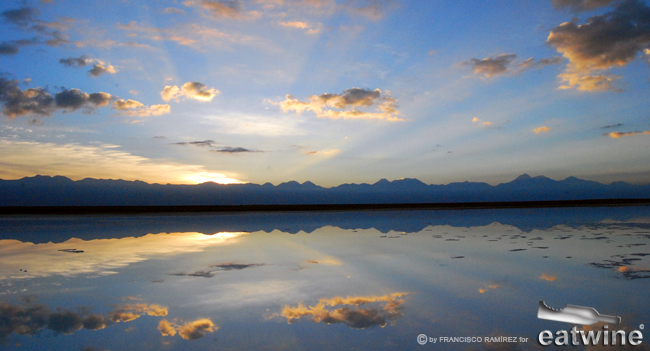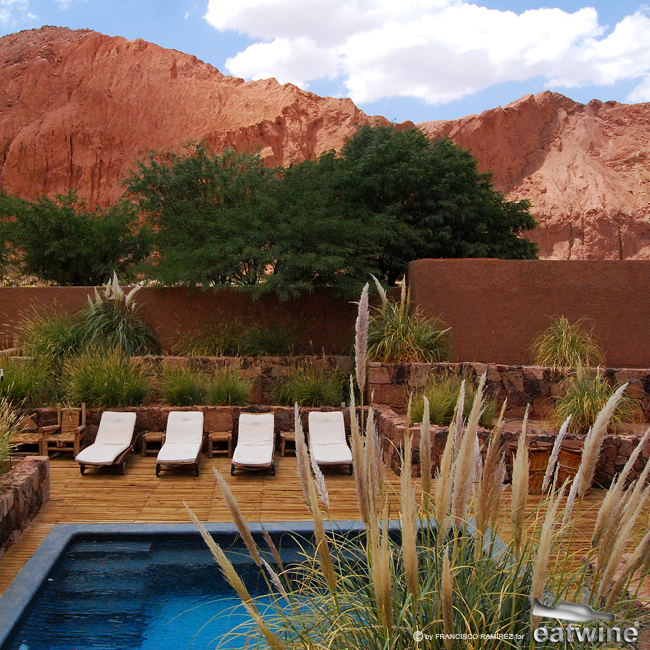Last Friday, we left big city life behind and jetted 2 hours north into the vast, arid Atacama Desert. We touched down in the desolate mining city of Calama. After rendezvousing with our driver, we drove past a “field” of new wind turbines that will provide clean electricity for the entire city. We climbed over the Domeyko mountain range towards the desert oasis of San Pedro de Atacama, an hour away, the jumping off point to some of the most spectacular scenery in Northern Chile.
We arrived at our hotel, Alto Atacama, strategically located three kilometers north of town near the Pukara de Quitor in the beginning of the green Catarpe valley along the San Pedro River. As we emerged from the van into the blinding sunshine, my body warmed up with the sultry temperatures and I felt my mind slowing down. One glance at my phone revealed I barely had a cell signal. Wi-Fi was patchy at bet. Blessing or curse? Ultimately a blessing–I read (gasp) an entire book in two days.
We moved slowly upon arrival, as San Pedro is sneakily located in the pre-altiplano at 2,400 meters, or 7,800 feet. This was one of several trips to the region so we had already explored many remote salt flats, volcanic formations, altiplanic villages, the steaming geysers of El Tatio, and meandering rivers. This geological bonanza was all a relatively short distance from town. Besides relaxing, we were keen to further explore. We wanted to revisit some favorite experiences, get creative with some new hikes we had not yet done, and get a hearty dose of sun before autumn and winter descended on Santiago in the upcoming months.
After leisurely arrival lunch and settling in, we departed in late afternoon to explore the Valle de la Luna, or Moon Valley, a few kilometers outside town in the Cordillera de la Sal, Salt Mountains. My husband and I had visited this valley over a decade earlier in our college days and decided it was time to revisit this classic spot at sunset. These mountains are a marvel to behold. Nature over millions of years has carved them with wind and water and their composition is clay and Sodium Chloride (salt). There is no vegetation, just rock formations in colors ranging from reddish-brown to clay to caramel to white. There’s a reason that it is called Moon Valley with its arid, not-hospitable-to-life environment. Taking a hike was not unlike moonwalking, with the sun shining of course. This year in San Pedro they had unusual out of season rain in February so there was a layer of newly formed salt coating the landscape that honestly look like snow.
As we walked in the late afternoon, the wind started whipping up (not a good combo with sand). We went on a little exploration into a canyon with a cave, all formed from salt and clay crystals. The only way to describe the place is as eerie. You hear the formations creaking constantly. They moan, they groan, some even sounded like the pitter-patter of moisture dripping on the roof after the rain stops.
We headed to a bluff for a majestic view of the mountains, valley, Andes, and volcanoes in time for Nature’s nightly show: Sunset. Plus, a pre-dinner aperitivo. As the clock hit 20:00, the sun sunk into the western horizon. Its soft, golden rays turned the landscape golden, then orange, then pink, then purple, and then finally a deep cobalt blue of the early evening sky. I shivered as the mercury dropped. Stunning.
Early the next morning, we set off to the remote area near Yerbas Buenas, about 45 minutes from town, to see perfectly preserved prehistoric petroglyphs, carved by the Atacameno people. Dating back over 10,000 years, we saw depictions of llamas (a sign of fertility), chamanes (medicine men), even monkeys, that were in pristine condition. We made a pit stop nearby in the stunning Rainbow Valley with rocks and cliffs in all shades of colors of the rainbow. The soils derived their colors from the different mineral content and were yellow, white (salt), blue (cobalt), green (copper), red mountains, (clay). I had déjà vu several times of Northwest Argentina, only 8 hours away by car by Paso Jama and the altiplano.
In the afternoon, we decided to lay claim to one of the lovely six private pools at the hotel for ourselves and make the most of the sunshine. I delighted in reading a book for hours on end. My husband braved the cold pool water (non-heated!). Okay, it was surprisingly refreshing after being in the sun although I only submerged to my waist. I took a long, long siesta. It finally felt like a real weekend. I didn’t have to do anything, be anywhere, and get anything done. In this day and age that is a true luxury.
Before sunset, we decided to mosey into town for a little paseo. The town is still a backpacker hub with primarily restaurants, bars, hotels, and shops. My husband and I reminisced about our days in San Pedro in the 90s before the town had electricity all day (generator from 8-10pm each night) and was a dusty, adobe outpost. It had changed so much. The petit main square still housed the Iglesia de San Pedro de Atacama, a beautiful, white washed adobe church dating back to 1745, finally being repaired! In the colorful artisan market, we hunted for hand-stitched stuffed llamas and darling Atacameno dolls. I had fallen in love with them at Awasi on a previous trip. However, we weren’t going to use them to decorate our living room or be a placeholder on the dinner table… these were bought thinking about Baby’s future nursery (pending project coming in May-June).
That night after dinner, walking back in nearly pitch black to our room, we stopped to stargaze in the cloudless sky. We could see the Milky Way galaxy with a naked eye. Thousands of stars blinked. According to our guide, who would explain on a hike the next day, we were actually looking at the past. By the time the light from those distant celestial bodies arrives to earth some of them are 400 light years away. Can you wrap your mind around that? Four hundred. Light. Years. San Pedro, and northern Chile, is one of the best places in the world to see the night sky with the high altitude, dry, clear weather, and low light pollution. It is as beautiful at night as during the day. I, at least, always have the sensation that there’s no way we can be alone in this infinite galaxy when I peer up to that endless cosmos.
So were our days in San Pedro. Full of sun, hikes, relaxation, a wonderful massage in the hotel spa, beautiful scenery, and most importantly togetherness without work. One morning, we trekked along the high ridge of Las Cornizas with sweeping views of the green Catarpe Valley below. We ran down the humungous sand dunes into Death Valley like little kids. We arose before dawn to take in nature’s early morning spectacle at Laguna Tebenquiche, an evaporating salt lagoon. Alone without another soul, not even a bird, for miles, we walked across the white, crusty sand towards water’s edge. As the sun peered from behind the volcanoes, the soft light reflected in the water so that the horizons touched. It was one of those moments you give thanks to be alive and realize how beautiful life truly is. It was also freezing cold. Bone-chilling cold. I shivered in my fleece, wishing I had thought to bring my trusty chullo from Santiago. I forgot shortly after as our guides served us steaming cups of coffee and the emerging sun warmed our bodies. Lagoon-side breakfast was a nice start to the week.
As we rode in the van back towards Calama and onwards to Santiago, we took in the final vistas of this beautiful place, one of the driest on earth. It is always amazing to me how after a few days in such stunning natural surroundings that you become “used” to seeing them. Oh right, that pink sunset on the volcanoes is just another daily occurrence. Or contemplating the rolling contours of the land for hundreds of kilometers is something we all do. Being a city dweller, this never gets old. However, Santiago and reality, was calling. So long San Pedro.
